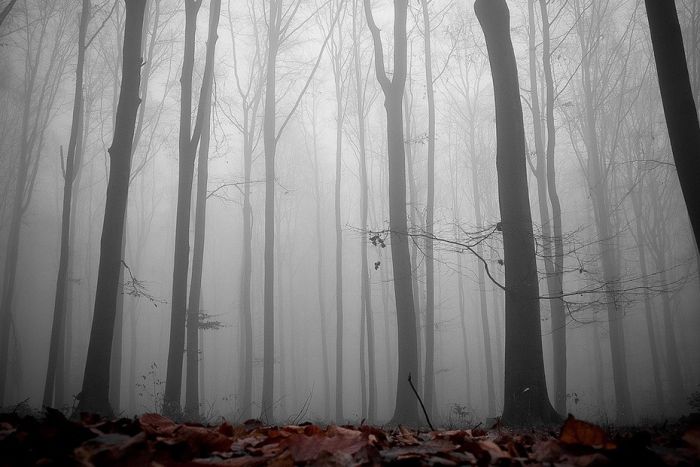|
|
Fog Forest
|
Fog can form suddenly, and can dissipate just as rapidly, depending what side of the dew point the temperature is on. This phenomenon is known as flash fog.
Another common type of formation is associated with sea fog (also known as haar or fret). This is due to the peculiar effect of salt. Clouds of all types require minute hygroscopic particles upon which water vapor can condense. Over the ocean surface, the most common particles are salt from salt spray produced by breaking waves. Except in areas of storminess, the most common areas of breaking waves are located near coastlines, hence the greatest densities of airborne salt particles are there. Condensation on salt particles has been observed to occur at humidities as low as 70%, thus fog can occur even in relatively dry air in suitable locations such as the California coast. Typically, such lower humidity fog is preceded by a transparent mistiness along the coastline as condensation competes with evaporation, a phenomenon that is typically noticeable by beachgoers in the afternoon. Another recently-discovered source of condensation nuclei for coastal fog is kelp. Researchers have found that under stress (intense sunlight, strong evaporation, etc.), kelp release particles of iodine which in turn become nuclei for condensation of water vapor.
Fog occasionally produces precipitation in the form of drizzle or very light snow. Drizzle occurs when the humidity of fog attains 100% and the minute cloud droplets begin to coalesce into larger droplets. This can occur when the fog layer is lifted and cooled sufficiently, or when it is forcibly compressed from above. Drizzle becomes freezing drizzle when the temperature at the surface drops below the freezing point.
The thickness of fog is largely determined by the altitude of the inversion boundary, which in coastal or oceanic locales is also the top of the marine layer, above which the airmass is warmer and drier. The inversion boundary varies its altitude primarily in response to the weight of the air above it which is measured in terms of atmospheric pressure. The marine layer and any fogbank it may contain will be "squashed" when the pressure is high, and conversely, may expand upwards when the pressure above it is lowering.
|
|









